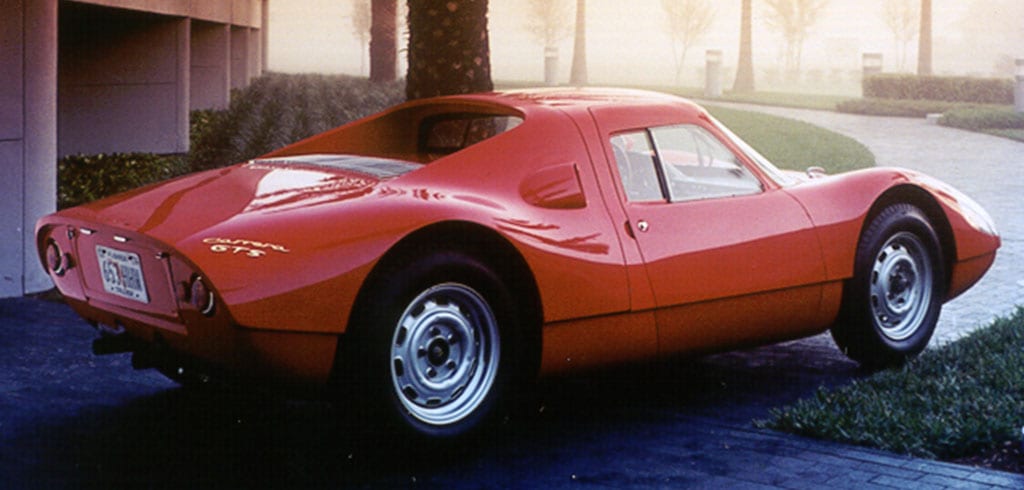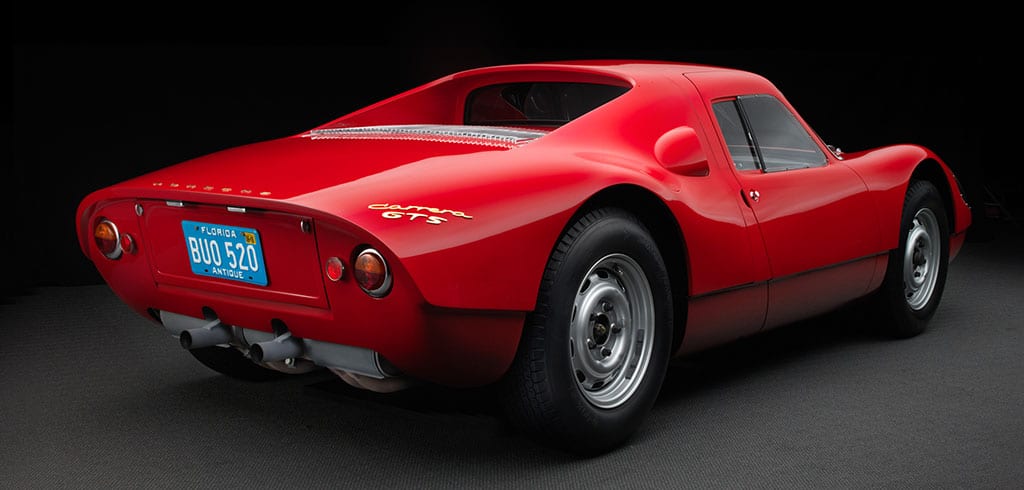Tech Specs
Two liter (1966cc), twin overhead camshaft, Flat four, air cooled engine mounted midship, 180 hp at 7000rpm.
Before/After
1964 Porsche


About the 1964 Porsche 904 Carrera GTS
The 904 was produced because Porsche needed a new instrument to continue winning two-liter Grand Touring Championship races for the 1964 season. Regulations now dictated a 100 unit minimum production. This worried Porsche since never before had the factory sold more than 35 or so of any single race car. So the 904 was designed to be streetable too.
Ferdinand “Butzi” Porsche III – Ferry’s eldest son who, at 28, was heading Porsche’s new styling department – designed a fiberglass (GRP) body that was bonded directly to the sheet metal chassis’ side rails. Given the size of the production run, the body/frame assembly was contracted out to aircraft builder Heinkel. Unfortunately, the “spray and chopper gun” manufacturing system gave inadequate control over body panel thickness. Thus a 904 was usually vastly heavier (from 100-200 pounds) than its homologated weight—which tended to irritate purchasers. Height of the 904 was a mere 42.0 inches, which made getting into it difficult for a sizable driver. Yet, despite all, the car was a winner.
Porsche 904s took on Ford, Ferrari and Abarth at the Targa and finished one-two in the GT Class. At Le Mans, while five of a dozen Ferraris retired, Porsche’s record with the 904 was five entries, five finishers in the top twelve. Among races in which the display car competed in 1964 were Bad Nerrenahr, the Targa Florio and the Nurburgring 1000 km.
In addition to the structural problems of the body and the 904’s unforgiveness of driver error, its gearbox was a handful, its engine obsolete. But the car’s charisma was everlasting. While other superannuated Stuttgart competition cars lay forgotten in fields, back garages or dusty corners of racing shops, the 904 became the first collectible racing Porsche. Its “flying buttress” rear window inspired Pinninfarina’s mid-engined Dino GT for Ferrari and Bill Mitchell’s styling for Corvette. Some say the 904 was the most beautiful Porsche road car ever built.
Photos – Peter Harholdt










